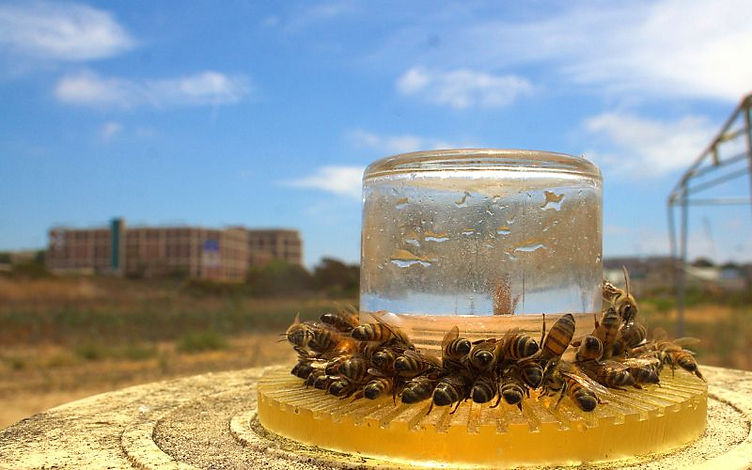Beekeeping is more than harvesting golden honey—it’s about maintaining strong, healthy colonies year-round. One of the most important tasks is ensuring that your bees get the right nutrition at the right time. Feeding honeybee colonies varies by season, and knowing what your bees need can make the difference between a thriving hive and one struggling to survive.
But while you’re feeding and managing your hives, it’s equally important to protect yourself. That’s where affordable bee suits and high-quality protective gear come into play. Having the right beekeeping clothing keeps you safe while giving your colonies the care they need.
In this guide, we’ll take you through a season-by-season approach to feeding honeybee colonies while also highlighting how protective gear like Premium Beekeeping Jackets, lightweight suits, and full-body beekeeping suits can make your beekeeping journey safer and more enjoyable.
Spring Feeding: Kickstarting Colony Growth
Spring is when honeybee colonies begin to expand after winter. The queen starts laying eggs, and brood rearing demands more food and energy. However, early in the season, natural nectar and pollen may still be scarce.
- Sugar Syrup Feeding: Providing a 1:1 sugar-to-water syrup helps stimulate brood production and encourages comb building.
- Protein Supplements: Pollen patties or protein supplements are essential to support the growing brood.
- Monitoring Hive Strength: Regular inspections ensure bees are not starving before nectar flow begins.
While feeding in spring, you’ll need to open hives frequently. Wearing beginner beekeeping suits or ventilated bee suits makes these tasks comfortable and sting-free. A lightweight bee suit also prevents overheating while you check frames and feeders.
Summer Feeding: Supporting Nectar Flow
During summer, most colonies rely on natural nectar sources. Feeding is usually minimal, but there are still situations where supplemental feeding becomes necessary:
- Drought Conditions: If nectar flow slows, a sugar syrup supplement can keep bees from going hungry.
- Preventing Robbing Behavior: Ensure that feeders are placed inside the hive to reduce the risk of robbing from neighboring colonies.
- Water Sources: Provide fresh water, especially during hot weather.
When working with active colonies in summer, bees can become more defensive. This is where lightweight bee suits and the best bee suits for hot weather come in handy. Breathable fabrics allow airflow, keeping you cool while ensuring maximum protection. Many beekeepers choose protective bee clothing with ventilation panels during this season.
Fall Feeding: Preparing for Winter Survival
Fall is a crucial period for honeybees. Colonies must store enough food to survive the long winter months ahead. Without proper feeding at this stage, colonies risk starvation.
- Heavy Syrup Feeding: A 2:1 sugar-to-water ratio helps bees build up winter stores.
- Pollen Patties: These boost protein levels and prepare colonies for raising the last rounds of brood.
- Timing is Key: Complete fall feeding before cold temperatures set in, as bees need warm days to process syrup into honey stores.
Fall hive checks can be busier, requiring more handling. Wearing durable bee suits and full-body beekeeping suits ensures maximum protection against stings while you lift heavy frames and inspect stores. Investing in protective beekeeping gear that balances comfort and safety helps you focus on colony care without distractions.
Winter Feeding: Emergency Hive Support
Winter is the toughest season for honeybees. Natural foraging isn’t possible, and the hive relies entirely on stored food. But sometimes, those stores run out before spring arrives. That’s when emergency feeding steps in.
- Candy Boards & Fondant: Solid sugar-based feeds like candy boards and fondant provide emergency food for bees.
- Hive Weight Checks: Regularly lifting the hive slightly can give you an idea of remaining stores.
- Minimal Disturbance: Open the hive only when necessary to prevent heat loss.
When working in cold conditions, warm bee suits and insulated bee suits provide extra comfort while you handle emergency feeding. Choosing the best bee suits for cold weather ensures you stay warm and protected even on freezing days.
The Role of Beekeeping Gear in Hive Management
Feeding honeybee colonies season by season requires dedication, consistency, and the right equipment. Just as bees need proper nutrition, beekeepers need proper protection. That’s why investing in affordable bee suits is so important.
High-quality gear doesn’t have to break the bank. Many budget-friendly bee suits offer excellent sting protection, breathability, and comfort. Whether you’re a beginner learning the ropes or an experienced beekeeper managing multiple hives, the right suit makes feeding and inspections safer and less stressful.
Some types of gear to consider:
- Best bee suits for beginners – simple, full-coverage protection.
- Ventilated bee suits – ideal for hot summer inspections.
- Full-body beekeeping suits – maximum protection for aggressive colonies.
- Budget-friendly bee suits – affordable yet durable for long-term use.
Finding the Right Beekeeping Supplier
The quality of your gear and feeding supplies depends on where you buy them. Choosing a trusted beekeeping supplier ensures you get reliable equipment, from protective suits to feeders and hive tools. Look for suppliers that:
- Offer a variety of affordable bee suits for different climates.
- Provide reliable feeding equipment like feeders, pollen patties, and syrup-making supplies.
- Back products with quality guarantees and excellent customer service.
One recommended supplier is Oz Armour, known for its affordable, durable, and protective beekeeping suits. They offer a wide range of ventilated, lightweight, and full-body suits that are perfect for both beginners and professional beekeepers.
Conclusion
Feeding honeybee colonies the right way means adapting your approach to the seasons—syrup and protein in spring, minimal support in summer, heavy feeding in fall, and emergency backups in winter. When combined with careful hive monitoring, these seasonal practices ensure your bees remain healthy, productive, and ready for every challenge.
At the same time, don’t forget your own safety. Investing in affordable bee suits and high-quality protective gear from a reliable beekeeping supplier allows you to work with confidence while giving your colonies the care they deserve.

